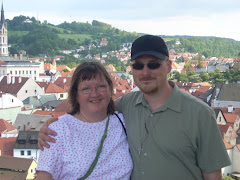As an Aspie I rely so very much on certain things in the world being predictable. I often don’t even realize it. So think for a moment about a hospital. They are terribly comforting places and it’s often easy to get lost. However, one can expect a series of hallways, waiting rooms, and nurses stations. Usually this is oriented in squares or rectangles. Sometimes there is a rotunda that joins two wings, the designers hoping to bring in something other than a clinical feel, but typically it goes back to lots of 90 degree edges and straight lines.
The Native American museum in Washington D.C. is a something different entirely. The designers of that building were seeking to achieve a very organic aesthetic. The building is a series of sweeping curves. Successive floors of the building don’t necessarily line up neatly with one another, but instead the whole building has an undulation like the gently rolling hills of the great plains. Some walls are stucco and some are made of flag stone or brick. The curves and variety of forms all combine to say, “this is not an institution.”
This all brings me to Goshen hospital. I visited my dad there as he was recovering from surgery. It appears that some attempt was made to achieve an aesthetic similar to the Native American Museum with Goshen Hospital, or at least parts of it. So the main entry area is a swoops and curves, the walls are of rock in one place and different materials in others. That threw me a little. I think it was a remodeled entry, because once I got back toward the elevators it was back to straight halls.
What really threw me was the patient rooms. Typically there is a square area with a nurses station. Instead the nurses station was in the center of a . . . well I think the idea was that it would be a circle, but all the walls were straight. It was sort of like the Pentagon, but with more like ten sides. A decagon? As you can imagine, the center of a circle or decagon is smaller than the outside (my apologies to all you geometry experts for the way I worded that). With the patient rooms on the perimeter of this decagon, each patient room was roughly wedge shaped. Like a slice of pie.
Pie sounds really good right now, but walking into that room I felt like a had just entered Picasso. So not only am I emotionally charged from visiting my father who is recovering from surgery, but my conceptual brain is working in over drive trying to get the wall of the room to straighten into a rectangle shape. It was all I could do to not start rocking back and forth. I really wanted to stand in a quiet corner, but there weren’t any.
Corners are comforting because they are distinct and strong and fixed. Corners don’t breath in and out, or shift and shimmer. This building had no quiet corners that I could stand in. Instead the walls in the patient rooms drifted out, the hall outside drunkenly careened in dizzy circles, and the entry of the hospital was trying desperately to be the American prairie.
That really freaked me out.
Aug 27, 2008
Subscribe to:
Post Comments (Atom)





Oh wow. I can't say I can remember ever being in a room that wasn't at least vaguely rectangular (with the exception of those rooms where the ceiling slopes down really low in part of the room, and I hate those). While I'm kind of curious what a round room would look like, I'm not sure I'd like that whole... lack of corners, thing.
ReplyDeleteI also like corners, not just because they're nice to sit in, but because they're very good to put stuff in, too. If everything is rounded, or at least, no good, right-angle corners, how is anyone supposed to have enough room to put things? It sounds cramped.
Corners are nice.
ReplyDelete